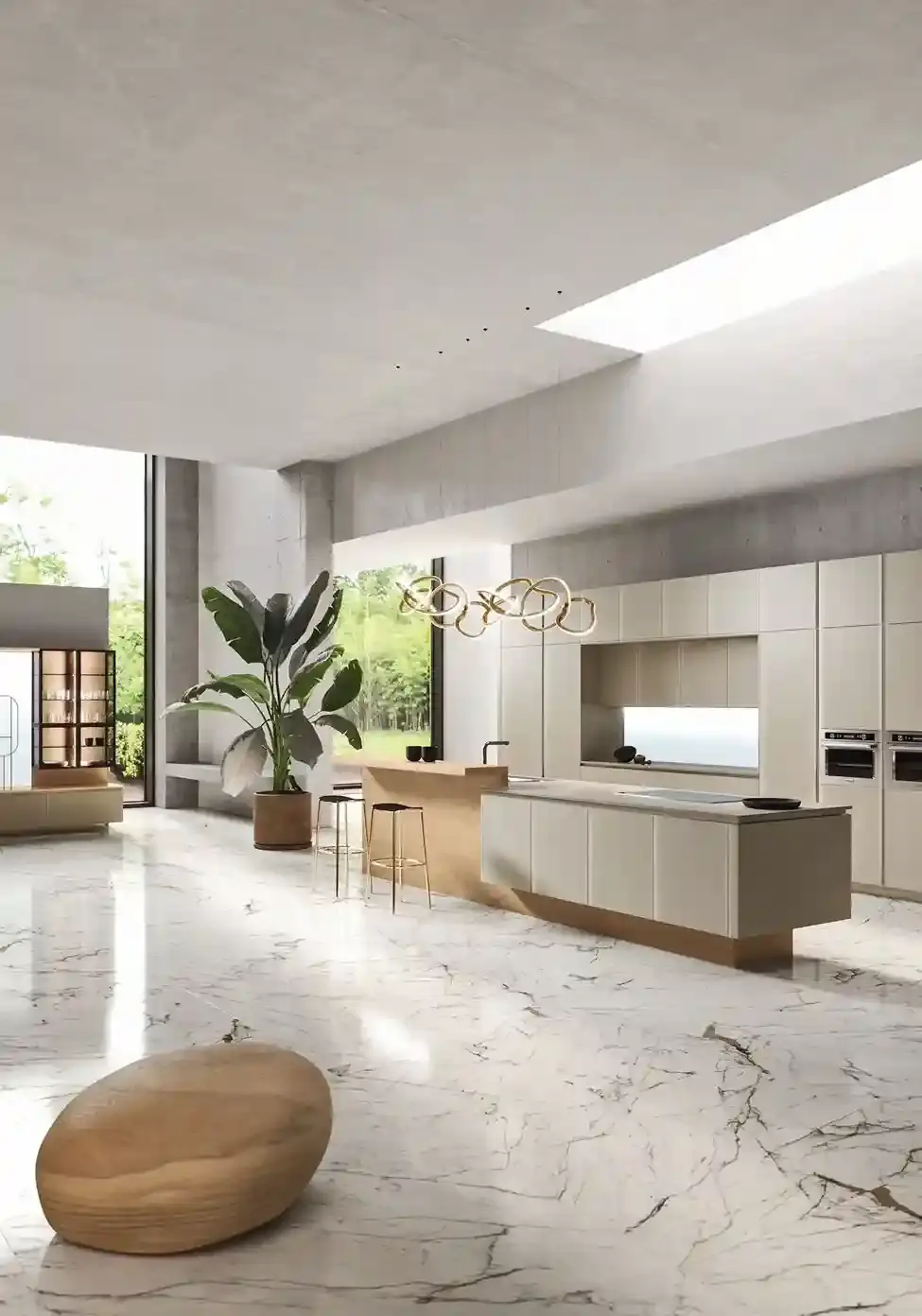BLOG | The Importance of Lighting in the Kitchen
When it comes to kitchen design, lighting is often an afterthought. However, lighting is one of the most important elements of a well-designed kitchen. Proper lighting can enhance the functionality and aesthetics of your kitchen, making it a more inviting and enjoyable space to cook and entertain. In this blog post, we'll explore the importance of lighting in the kitchen and the different types of lighting available, including natural and artificial light.
IMPORTANCE OF LIGHTING IN THE KITCHEN: The kitchen is the heart of the home, and it's where we spend a lot of our time cooking, eating, and entertaining. Good lighting is essential in the kitchen because it helps us see what we're doing, creates a warm and inviting atmosphere, and enhances the overall design of the space. Good lighting can also improve safety in the kitchen. Adequate lighting can help prevent accidents and injuries, such as cuts and burns, by illuminating work surfaces and sharp objects. In addition, good lighting can help you identify potential hazards, such as spills or broken glass, and avoid them.
DIFFERENT TYPES OF LIGHTING: There are two main types of lighting in the kitchen: natural and artificial light. Natural light comes from the sun and is an excellent source of light for the kitchen. It's free, abundant, and provides a warm and inviting atmosphere. Natural light can also improve your mood and health by providing vitamin D and reducing stress. Artificial light, on the other hand, is created by light fixtures and can be customized to fit your needs. There are three main types of artificial light: ambient, task, and accent. Ambient lighting is the general lighting in the kitchen. It provides overall illumination and is usually mounted on the ceiling. Examples of ambient lighting include recessed lights, chandeliers, and pendant lights. Task lighting is focused lighting that illuminates specific areas of the kitchen, such as countertops, sinks, and stovetops. Task lighting is essential for performing tasks that require precision and accuracy, such as chopping vegetables or reading recipes. Examples of task lighting include under-cabinet lights, track lights, and strip lights. Accent lighting is decorative lighting that adds visual interest and enhances the design of the kitchen. It's usually used to highlight specific features, such as artwork or architectural details. Examples of accent lighting include wall sconces, picture lights, and cabinet lights.
NATURAL vs ARTIFICIAL LIGHT: Both natural and artificial light have their advantages and disadvantages in the kitchen. Natural light is free and abundant, and it provides a warm and inviting atmosphere. However, it's not always reliable, and it can be difficult to control. Natural light can also cause glare and heat, which can be uncomfortable in the kitchen. Artificial light, on the other hand, is reliable and can be customized to fit your needs. It's also more controllable than natural light, which makes it ideal for task lighting. However, artificial light can be expensive, and it can create a harsh and uninviting atmosphere if not used correctly. In conclusion, lighting is a crucial element of a well-designed kitchen. It can enhance the functionality and aesthetics of your space, improve safety, and create a warm and inviting atmosphere. When designing your kitchen lighting, consider the different types of lighting available, including natural and artificial light, and choose the ones that best fit your needs and preferences.


